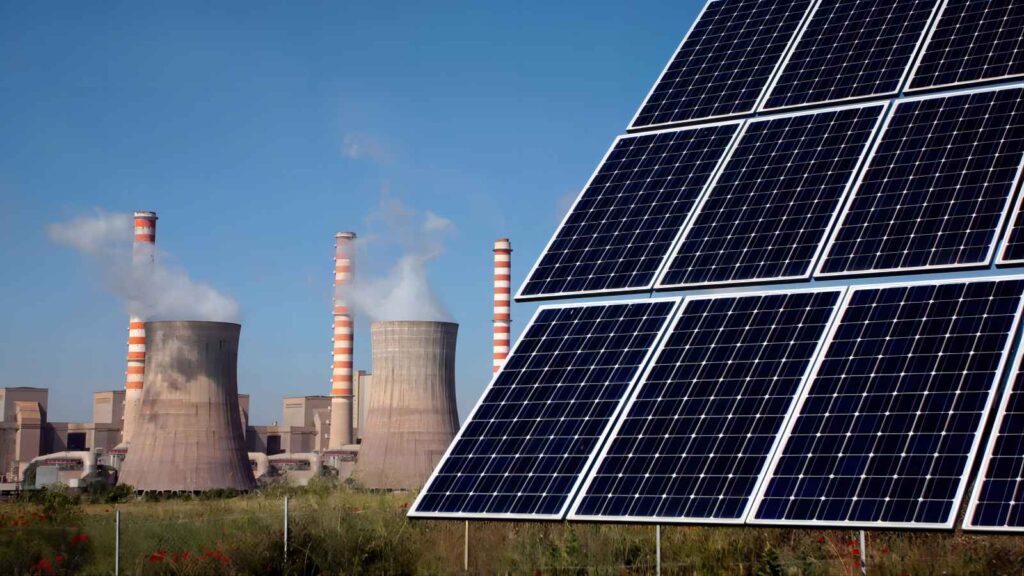Slowly, the world is realising that the usage of non-renewable energy sources, such coal and natural gas, contributes significantly to the escalating global climate disaster. In an effort to contribute to the answer, nations are now rushing to create the infrastructure necessary for alternative renewable energy sources.
One of the most discussed topics for proponents of renewable energy is the argument between solar and nuclear power. Both energy sources are regarded as clean and carbon-free, and their infrastructure can be constructed at a large enough scale to supply energy to a wide area. Cities in many nations are powered by nuclear energy, and solar power isn’t far behind. Which energy source, though, is better? Recent news about nuclear and solar energy makes it worthwhile to examine how each power source compares to the other. Learn more about each form of power and contrast its qualities to choose which is best for the environment and future development.

About Solar Energy
The electricity we obtain from the sun is referred to as solar energy. Electricity is created by converting solar energy. Given that there is an abundance of sunlight from which solar energy is produced, it is considered a renewable and sustainable source of energy. In actuality, solar energy is also “green” energy because it doesn’t contribute to pollution like energy from fossil fuels does.
Photovoltaic devices, which convert solar energy into electrical energy, are necessary to harness solar energy. There are several solar products on the market with built-in systems to store solar energy and use it to power the product as needed. By constructing a solar power plant, solar energy is currently being used to run homes, cars, and industrial processes.
About Nuclear Energy
Nuclear energy is energy that has been drawn from the radioactive material’s atoms’ nuclei. The nuclear energy from the nucleus is released through nuclear processes to produce thermal energy. It is a better option than the thermal energy from fossil fuels since thermal energy is released. Nuclear energy can also be produced through nuclear fusion, nuclear fission, and nuclear decay.
Many people are concerned about the potential mortality brought on by nuclear power. The data, however, indicates that the thermal energy from fossil fuels was more fatality-causing. Instead, it lessens air pollution by cutting back on the release of dangerous gases.
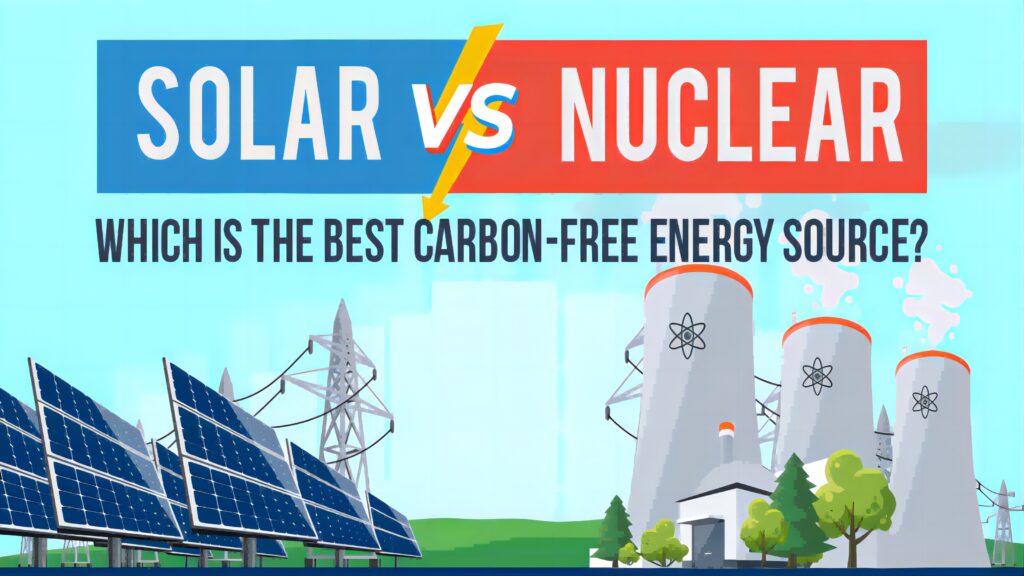
Solar Energy Vs. Nuclear Energy
1. Processing Time Needed Overall
Compared to a nuclear power plant, a solar power plant can be constructed more rapidly and easily. Heavy regulations placed on the nuclear industry and lobbying by many stakeholders, such as locals worried about the risk to public safety posed by the nuclear station, are important reasons that slow down the construction of a nuclear facility.
The world would benefit more from spending money and constructing utility-scale solar every 9 months rather than waiting for a single nuclear power plant every 5 years since the climate problem is urgent. It can take between 3 to 24 months to build a solar farm and the Australia Institute (TAI) submitted to the South Australian Nuclear Fuel Cycle Royal Commission on nuclear power plant construction time. The mean is 9.4 years. Solar energy can also be produced far more quickly than nuclear energy. Solar energy outperforms nuclear energy in terms of total time required. The factor may appear minor from a long-term viewpoint, but industrialists take it into account when deciding how to meet a country’s energy needs.
2. General Setup Cost
It goes without saying that building a solar power station is less expensive than building a nuclear one. This is due to the relatively low number of components needed for a solar power plant. Additionally, there is no requirement for source minerals like uranium, which is only found in a few nations. A solar power plant will likely cost less than a nuclear power station by around a factor of ten.
Nuclear energy is substantially more expensive than solar energy. The Levelized Cost of Energy (LCOE) to produce 1 megawatt-hour (MWh) of power from a solar farm is US$ 40, according to a 2020 report. The LCOE of nuclear power facilities, in contrast, is US$ 155 to produce the same amount.
In comparison to solar, nuclear energy has astounding initial and ongoing expenses. The difference between the costs of producing solar and nuclear energy keeps getting smaller over time. The cost of solar energy was US$ 359/MWh in 2009, according to the same data, but it has since sharply decreased to US$ 40/MWh in 2019. However, within the same time period, the price of nuclear energy rose from US$ 123/MWh to US$ 155/MWh.
Aside from that, the price of installing solar panels has significantly decreased over the past 10 years. According to one analysis, the average cost of installing a rooftop solar energy system is about US$ 883 in 2020 as opposed to US$ 4,731 in 2010.
3. Annual Energy Production Overall
More often than not, a power plant’s capacity for producing energy aids in fulfilling demand. A nuclear power plant may run continuously, producing more annual energy overall. A solar power plant, on the other hand, can only generate power while the sun is shining, which implies that it is only useful and operational for 30% of the day. Solar energy is naturally lacking, which is why nations choose nuclear energy even if solar power plants are common.
The quantity of electricity a power plant can produce while it is running is referred to as its generation capacity. A study found that nuclear power facilities have a capacity factor of 93.5%, which means that they can run continuously for 341 days out of the year. Solar farms, on the other hand, have a capacity factor of 24.5% (89 days out of 365).
This distinction is brought about by the fact that solar arrays can only generate electricity when the sun is shining. Additionally, there is a lot of research and development being done right now to improve how well solar panels capture energy. In addition, battery technology has advanced significantly to more efficiently store solar energy.
The “capacity factor,” or how near a source comes to producing the maximum amount of electricity throughout the year, is the metric that distinguishes solar power from nuclear power. Once constructed, a nuclear power station can operate at its full capacity until it needs fresh fuel, which could be six to twelve months later. During this time, the facility also produces hazardous nuclear waste that is not recycled (more on that later). Because nuclear power typically produces as much electricity as it can every day of the year, 24 hours a day, the capacity factor is extremely near to 100%. Because solar power can only generate electricity when the sun is shining, its capacity factor is far from being this high. This limits its use to the daylight and causes it to vary greatly depending on how much sun the solar farm’s location receives throughout the year.
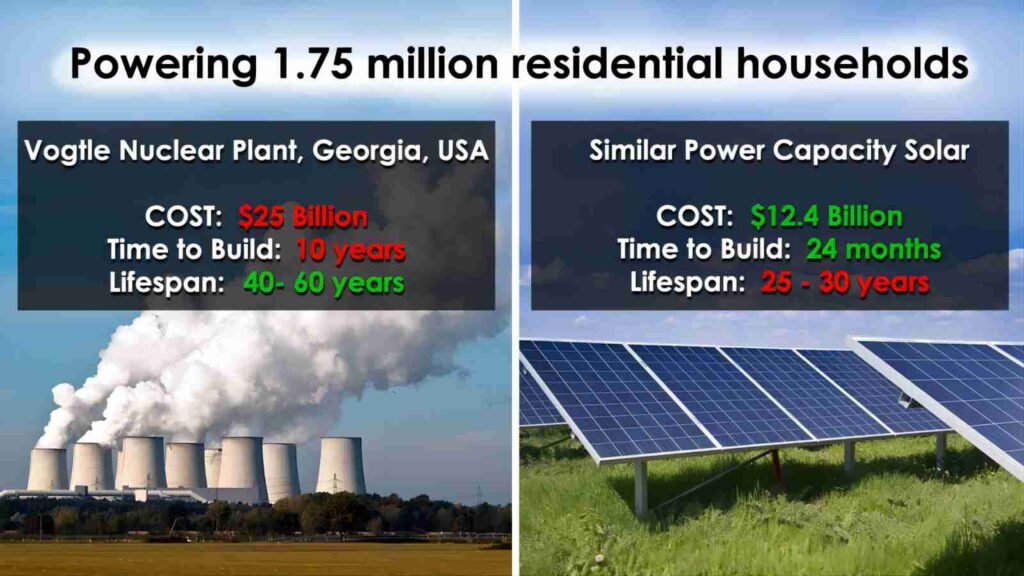
4.Safety
Nuclear reactor waste is harmful and can leak radiation if not properly disposed of. All pollution releases radiation over decades to centuries. The collecting of toxic waste has become a serious obstacle to nuclear growth. For individuals who live close to nuclear installations, meltdowns pose a permanent concern, whether they are brought on by human error like the Chernobyl accident or by a natural calamity like the Fukushima incident. Radioactive debris from these catastrophes can also be dispersed far from their epicentre.
The waste produced by nuclear reactors during regular operations, aside from singular catastrophes, is radioactive for thousands of years. Additionally, leaks from the nuclear site are a possibility and could have a negative impact on the health of individuals exposed. Even a small amount of radiation exposure could have devastating effects. There are various symptoms that cause weariness, nausea, vomiting, and diarrhoea. Residents of these places who work or reside near nuclear power facilities run the risk of ingesting toxic radiation.
Solar energy, in contrast, is secure since it doesn’t produce any harmful substances. Solar energy does not create radioactive waste and does not release harmful vapours, thus it does not endanger the health of those who are close to installations.
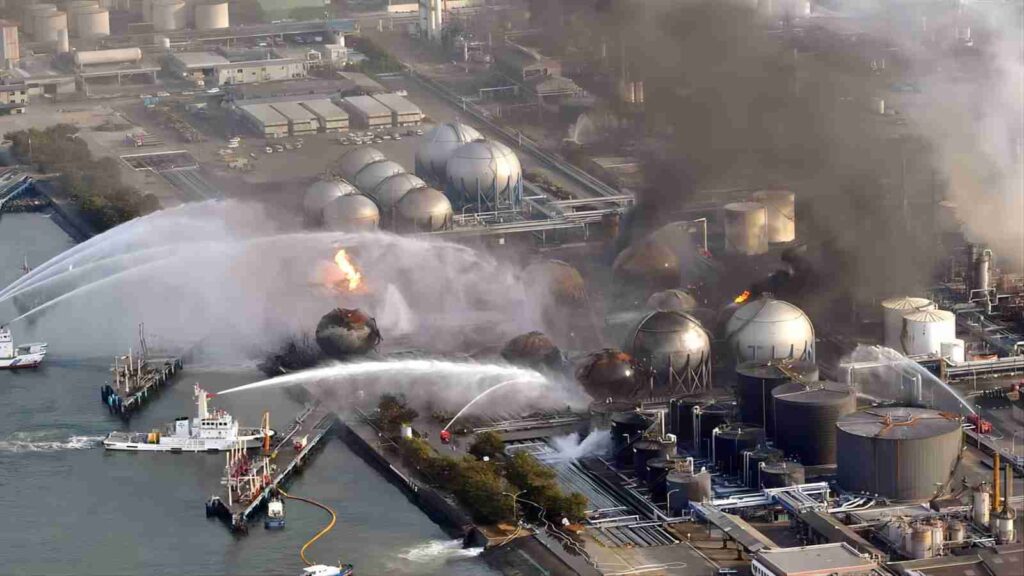
5.Sustainability
One of the most environmentally friendly forms of energy is solar energy, which can be produced for as long as there is sunlight. The panels typically last 25 to 30 years, which is a lengthy lifespan. The best part is that the source from which they get their energy is free and they don’t discharge any hazardous toxins into the environment.
A rooftop solar panel installation can help you lessen your household’s reliance on fossil fuels and meet your energy needs even if the grid goes down if utility-scale solar energy is not accessible in your area.
Despite being carbon-free, nuclear power is a non-renewable resource. Every three years, uranium, the substance that fuels nuclear reactors, must be replaced, and after that, it must be disposed of safely. Uranium is a limited resource since it must be mined from the Earth.
6.Recyclable status
Solar panel recycling is possible. But it’s important to realise that the problem of solar panel recycling is still in its early stages because the initial solar panels installed at the start of the solar boom are only now beginning to reach the end of their 25–30-year lifespan. Because of this, we don’t have an effective system in place to recycle them, much less one that can handle the large-scale recycling we’ll require in a few years when the number of solar panels that need to be recycled will reach the tens of millions.
Recycling photovoltaic panels is a difficult task because of the way they are made and the adhesives and sealants used, which make it difficult to disassemble them. However, it is certainly feasible and has already been carried out. We’re making great strides, it’s just not very efficiently yet. The fact that glass makes up approximately 75% of the material that is sorted out and is relatively simple to recycle into new items is a huge plus!
The process of decommissioning a solar farm is simple and straightforward: remove the panels, and we’re off! The land is not contaminated, and as no infrastructure or concrete structures have been erected, it can be used right once for other activities, including farming.
However, nuclear fuel is difficult to be recycled. Since roughly 90% of the fuel’s potential energy is still present in it even after five years of operation in a reactor, used nuclear fuel, also known as radioactive waste, CAN be recycled to create new fuel and byproducts. The problem is that many nations, including the US, which generates over 2,000 metric tonnes of radioactive waste annually, don’t even attempt to recycle its radioactive waste. France is the world leader in nuclear fuel recycling, producing 1,150 tonnes of radioactive waste annually while processing 1,700 tonnes of old fuel commercially (4 kilogrammes of radioactive waste per citizen year!). then everything is fine? Really not. Radioactive waste is still amassing worldwide and becoming an issue. Only around 30% of the 400,000 tonnes of spent fuel that have been released into the atmosphere so far throughout the world have been recycled. There is still a small amount of radioactive waste that cannot be recycled after recycling and reprocessing (and will stay radioactive and harmful for hundreds or thousands of years).
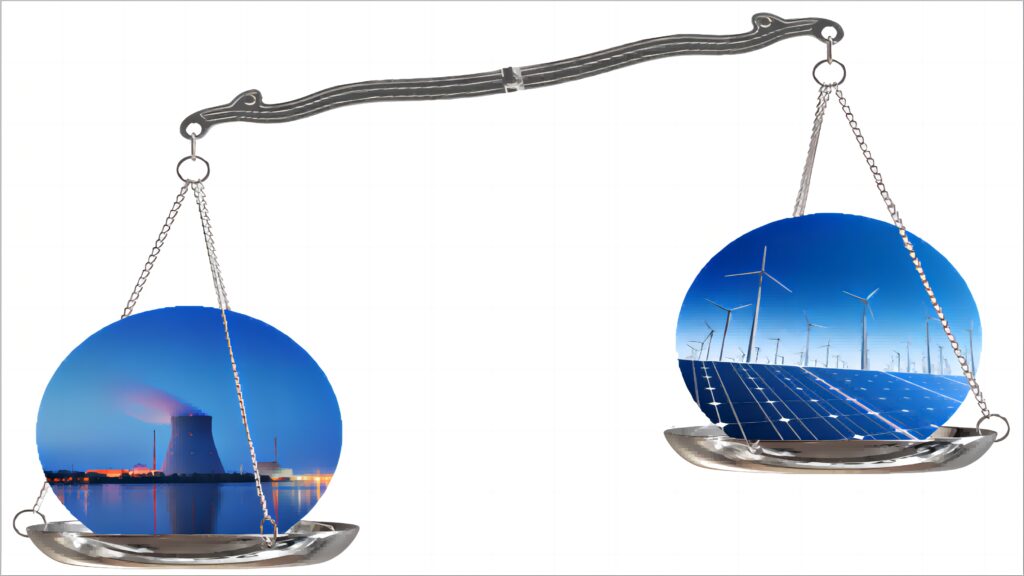
Prospects for solar and nuclear energy
Prospects for solar energy:
At present, the main problems of solar power generation are great influence by environmental factors and low power generation efficiency. In the future, solar power generation technology will be upgraded for these deficiencies, and there will be greater development in improving photoelectric conversion efficiency, reducing manufacturing costs, enhancing reliability and durability, and intelligent management.
According to the International Energy Agency’s projections, solar power will account for the majority of the world’s new installed power capacity in the future. By 2030, global installed solar power capacity is expected to increase by more than 700 GW to 1.5 terawatts, indicating that photovoltaic power generation has a broad technological development prospect.
Prospects for nuclear energy:
Nuclear energy is a clean, efficient and sustainable energy source, and it has become one of the important sources of energy for many countries. At present, the biggest problems in nuclear power generation are potential safety hazards and nuclear waste disposal. These problems are closely related to the safety of human life, and they are also hot topics that have attracted much attention. Many scientists have begun to study how to improve the safety of nuclear power generation. In the future, the development direction of nuclear energy technology mainly includes generation IV nuclear reactor technology, nuclear waste management technology, nuclear fusion technology, safety technology. It is believed that in the near future, the safety of nuclear power generation will be improved, and nuclear waste will be treated in a harmless manner, and it will occupy a more important place among many clean energy sources.
According to projections by the International Atomic Energy Agency, nuclear energy will be one of the fastest-growing sources of electricity in the world over the next 20 years, with installed nuclear power capacity more than doubling. In Europe, nuclear energy will be the largest source of low-carbon energy and is expected to provide more than one-third of Europe’s electricity demand. Nuclear energy technology therefore has a promising future.
Since everyone arrives to their own conclusions, there isn’t a clear winner in the dispute between solar and nuclear power. One thing is certain, though: fossil fuels are by far the worst for the environment when compared to solar and nuclear power. More must be done to wean ourselves from this dependence if we are to clean up and preserve our lovely planet. Cleaner energy adoption will undoubtedly be advantageous!
Since 2008, Maysun Solar has been dedicated to producing high-quality photovoltaic modules that contribute to combating climate change. Our advanced technology in IBC, HJT, TOPCon, and balcony solar panels ensures exceptional performance and reliability, capable of withstanding harsh weather conditions for long-term operation. We have established offices and warehouses in multiple countries and built lasting partnerships with top installers to provide comprehensive support. For the latest quotes or any inquiries related to photovoltaics, feel free to reach out to us—we’re here to help!
Reference:
Ecoideaz. (2021, July 17). Solar vs Nuclear Power: Which Is the Better Energy Source? EcoIdeaz. https://www.ecoideaz.com/expert-corner/pros-cons-of-solar-vs-nuclear-power-which-is-the-better-energy-source
Shayan, M. E., & Ghasemzadeh, F. (2021). Nuclear power plant or solar power plant. In IntechOpen eBooks. https://doi.org/10.5772/intechopen.92547
SolarNRG Marketing Team. (2023, July 6). Solar vs. Nuclear: Which Is the Best Clean Energy Source? SolarNRG. https://solarnrg.ph/blog/solar-vs-nuclear-best-carbon-free-energy-source/
Teja, R. (2023). Solar Power Vs Nuclear Power – Which is the Better Energy Source? ElectronicsHub. https://www.electronicshub.org/solar-power-vs-nuclear-power/
NetEase. (2023, March 9). Photovoltaic power generation VS nuclear power generation, who has more advantages? https://www.163.com/dy/article/HVCRPIQH0552XG7S.html
Perez, A. (2023). Solar Power VS Nuclear Power -Which is better? GI Energy. https://gienergy.com.au/solar-power-vs-nuclear-power-which-is-better/
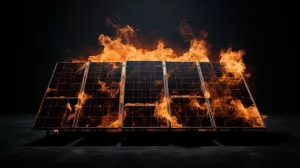
Photovoltaic Fire Safety Guide: How to Reduce the Risk of Power Plant Fires?
The risk of fire in photovoltaic power plants is on the rise. This article, based on European policy standards, provides a detailed explanation of design optimization, operation and maintenance strategies, and emergency response measures to enhance fire safety levels.
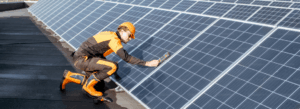
How to Design Low Maintenance High Yield Commercial and Industrial Photovoltaic Systems
How to build low-maintenance high-return photovoltaic plants This article analyzes the cost challenges and optimization paths of commercial and industrial photovoltaics in Europe helping enterprises achieve payback within 5–6 years and steadily increase long-term returns
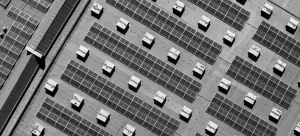
How Building-Integrated Photovoltaics (BIPV) is Changing the Commercial and Industrial Rooftop Solar Market
BIPV in Europe is reshaping the landscape of commercial and industrial rooftop photovoltaics, integrating building and power generation functions while offering policy incentives, economic returns, and ESG value. This article analyzes the advantages of BIPV in technological innovation, business models, and investment returns, helping enterprises seize the opportunity for green transformation.

How to Effectively Clean and Intelligently Maintain Photovoltaic Systems for Optimal Performance?
Explore how scientific cleaning and intelligent maintenance can ensure the efficient operation of commercial and industrial photovoltaic systems. Practical advice covers module cleaning frequency, monitoring system configuration, and long-term strategies for energy savings and performance enhancement.

2025 European Photovoltaic Policy Map: Deployment Paths and Regional Strategies for Commercial and Industrial Photovoltaics
A comprehensive analysis of the 2025 European commercial and industrial photovoltaic policy map, focusing on deployment strategies, incentive comparisons, and zero-investment models to support businesses in achieving an efficient and green transition.

Empowering Factories with Solar Energy A Strategic Tool for Controlling Production Electricity Costs
Commercial and industrial solar is becoming a key solution for factories to reduce electricity costs and hedge against price fluctuations. This article systematically analyzes its deployment models, cost advantages, and sustainable value pathways.

